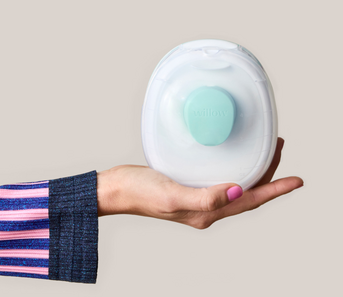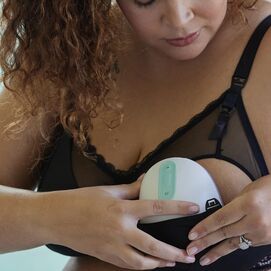Many parents plan to breastfeed—some for three weeks, six months, a year, or beyond. But things don’t always go to plan, and breastfeeding alone doesn’t necessarily mean meeting your breastfeeding targets.
There are many reasons why people stop lactating, and sometimes those reasons are beyond one’s control, from being prescribed certain medications, to having an unsupportive work environment, to having a miscarriage, stillbirth, or abortion.
What Does it Mean to Stop Lactating?
Stopping lactation involves telling your body, typically through reduced stimulation, to produce less and less milk, until it stops altogether. This can happen suddenly, or it can happen gradually through a process called weaning.
What Does it Mean to Stop Lactating?
The hormonal process that begins the production of the early milk colostrum occurs around week 16 of pregnancy. Once the placenta is delivered after birth, the drop in the hormone progesterone signals the body to increase milk production. Typically, within a few days after delivery, milk production shifts and is primarily controlled by stimulation from your baby’s latch and suckling, hand expression, or a pump.
Once you’ve decided to (and/or need to) reduce your supply or stop lactation, it’s best to do so with guidance and support related to your circumstances.
When to Stop Lactation
Some parents choose to gradually stop lactation, while others may decide, or need, to stop suddenly as a result of an illness, miscarriage, stillbirth, or abortion.
How to Dry Up Breast Milk at Home
Depending on individual circumstances, the process of stopping lactation may take more time for some nursing parents than others. Here are a few tips that can help manage the process:
-
Try tapering by dropping one feed every three to five days, until your supply dwindles.
-
Express only enough milk to keep your breasts comfortable.
-
Wear a supportive bra with pads to catch leakage, and regularly change those pads.
-
Apply cool compresses to your breasts when they’re full.
-
Ask your provider about taking nonsteroidal anti-inflammatory pain medication to reduce discomfort.
When to Get Help
Call your provider immediately if your breasts become tender, swollen, reddened, and/or warm to the touch, or if you experience a fever or other flu-like conditions. These symptoms may indicate mastitis, an infection caused by inflammation of the breast tissue that can happen when your breasts become engorged. Treating mastitis may require antibiotics.
If you need to quickly reduce your milk production for medical or other urgent reasons, talk to your provider (including pharmacist) about the possible use of ephedrine medicines to dry up your milk and hopefully prevent an infection.
Learn More With Willow
Being a new mama can be overwhelming, pregnancy is an exhausting process, let alone trying to navigate all of the physical changes your body experiences. If you choose to stop lactating, know that we're here to help. Looking for more resources? Visit the Willow blog to find insights and advice from real experts. You've got this!













